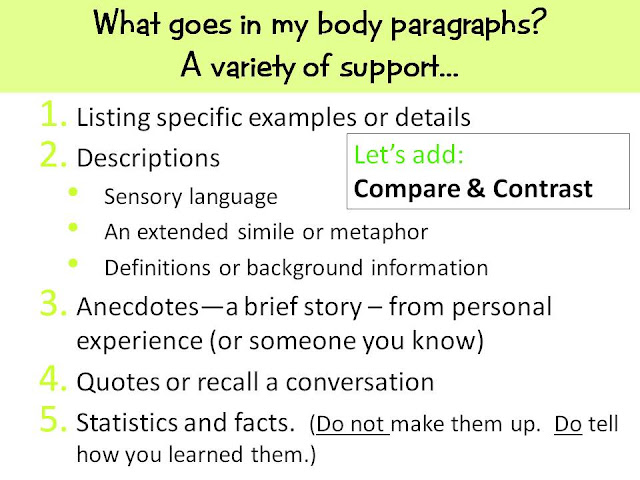You're finally getting to write the editorial that will change the world, or at least your school. The reader has to stay interested beyond the first paragraph though. Use these leads we learned in class to craft your best opening paragraph.
We also reviewed Zingers (last lines). Although you don't need to write your Zinger yet, you should already have an idea of which one would match your lead.
LEADS to start an essay
Sensory details
(photoshop): a description using sensory language (sight, smell,
touch, hearing, and taste) that describes a scenario related to your topic that
leads to the thesis.
Concession: a
presentation of one or more opposing arguments that lead the reader to the
writer’s thesis.
Quotation: a voice other than your own
that reveals the issue or topic or a famous or well-known quote that could
apply to your issue and leads to the writer’s thesis.
Anecdote: a
brief story that captures the essence of the topic and then connects the story
to the thesis.
Background or
surprising fact: a statement that contains relevant, interesting
background on the
topic or a surprising fact about
the topic that sets up the writer’s thesis.
Zingers to end
an essay
Prediction:
an insight into how the future could be different--better, or worse.
Echo:
circle back to the lead. For example: Did you write an anecdote lead? Write another version or an “ending” to the
story.
Pointed question:
Ask a question that leaves the reader thinking; should guide them to share your
opinion.
Instruction to the
reader: tells the reader exactly what they can do about the issue;
could be a strong, punched statement that gets right to the point—a call to action!
Remember:
LEAD + transition + THESIS = the introduction
Here's the rubric for the one paragraph introduction you'll turn in. We'll write these in class but finish for homework. They are due on 10/11 for B day and 10/12 for A day.




